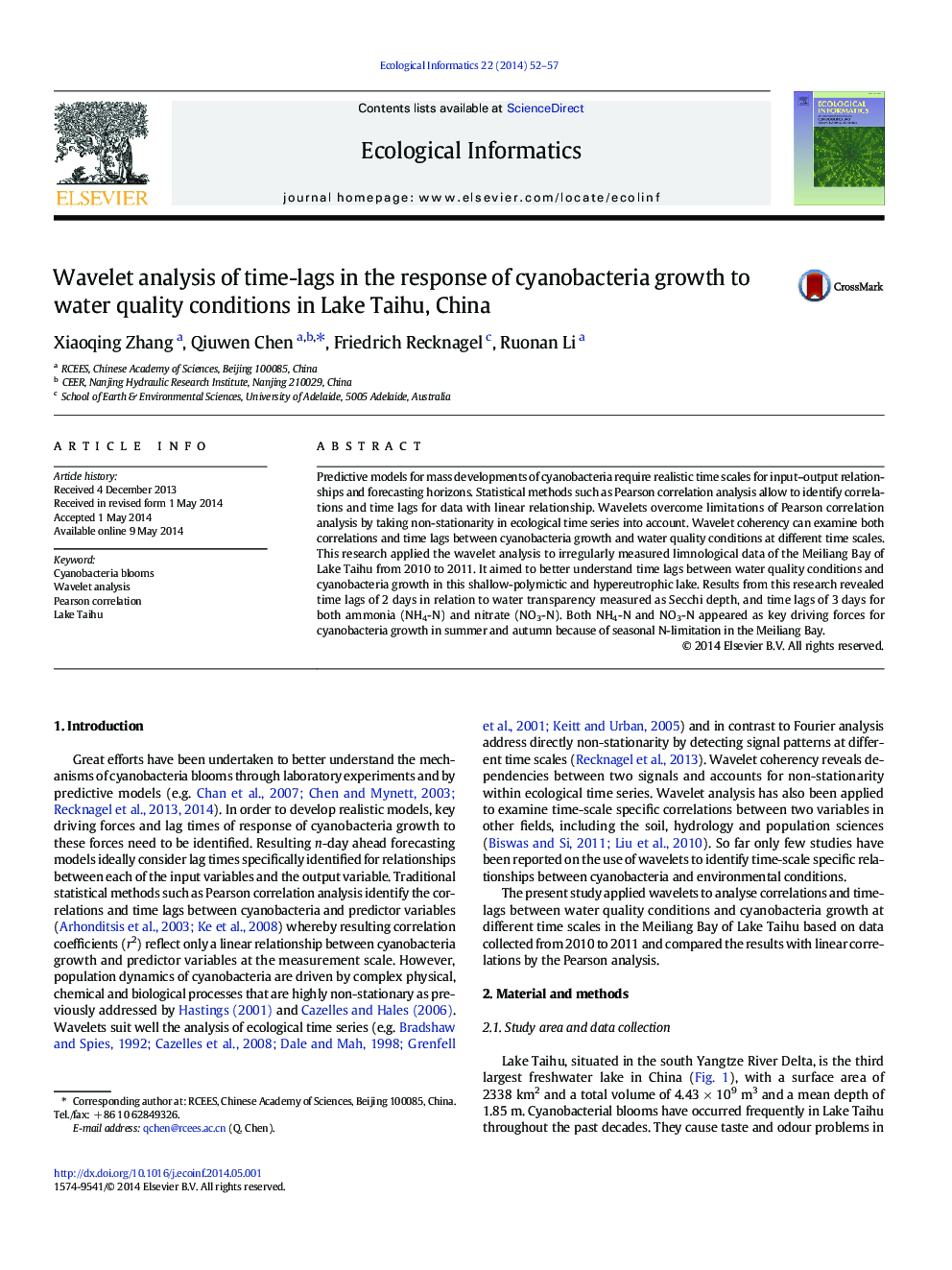| کد مقاله | کد نشریه | سال انتشار | مقاله انگلیسی | نسخه تمام متن |
|---|---|---|---|---|
| 4374881 | 1617210 | 2014 | 6 صفحه PDF | دانلود رایگان |

• Wavelet coherency was used to identify major factors driving cyanobacterial bloom.
• Time lags between cyanobacteria and Secchi depth, NH3, NO3 were 2, 3, 3 days.
• Meiliang Bay was found to have excessive internal PO4-P load and N limitation.
• Wavelet analysis did better than Pearson correlation for non-stationary time-lags.
Predictive models for mass developments of cyanobacteria require realistic time scales for input–output relationships and forecasting horizons. Statistical methods such as Pearson correlation analysis allow to identify correlations and time lags for data with linear relationship. Wavelets overcome limitations of Pearson correlation analysis by taking non-stationarity in ecological time series into account. Wavelet coherency can examine both correlations and time lags between cyanobacteria growth and water quality conditions at different time scales. This research applied the wavelet analysis to irregularly measured limnological data of the Meiliang Bay of Lake Taihu from 2010 to 2011. It aimed to better understand time lags between water quality conditions and cyanobacteria growth in this shallow-polymictic and hypereutrophic lake. Results from this research revealed time lags of 2 days in relation to water transparency measured as Secchi depth, and time lags of 3 days for both ammonia (NH4-N) and nitrate (NO3-N). Both NH4-N and NO3-N appeared as key driving forces for cyanobacteria growth in summer and autumn because of seasonal N-limitation in the Meiliang Bay.
Journal: Ecological Informatics - Volume 22, July 2014, Pages 52–57